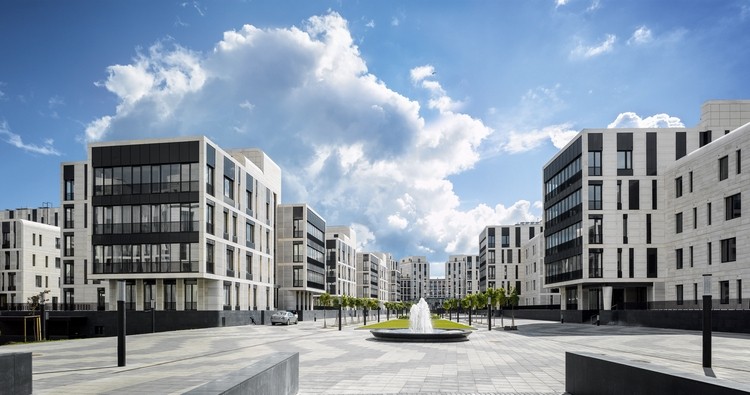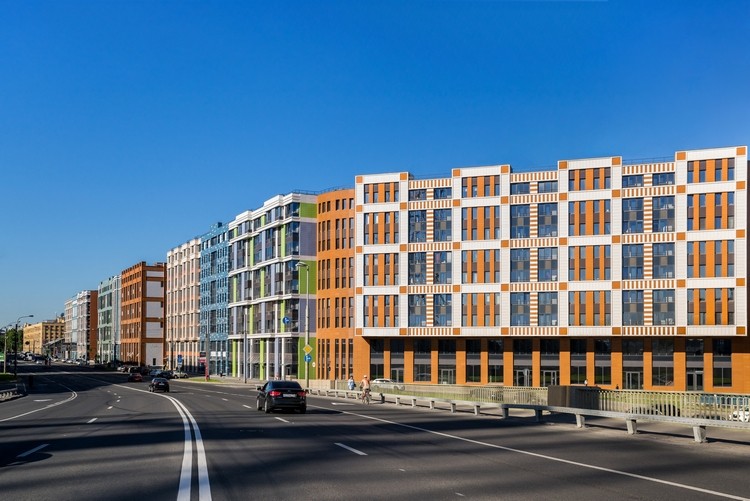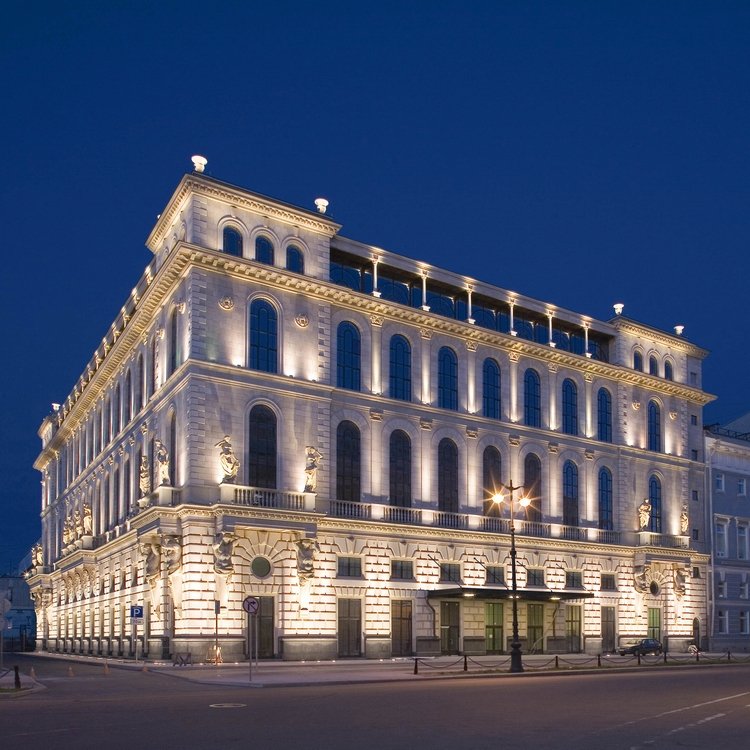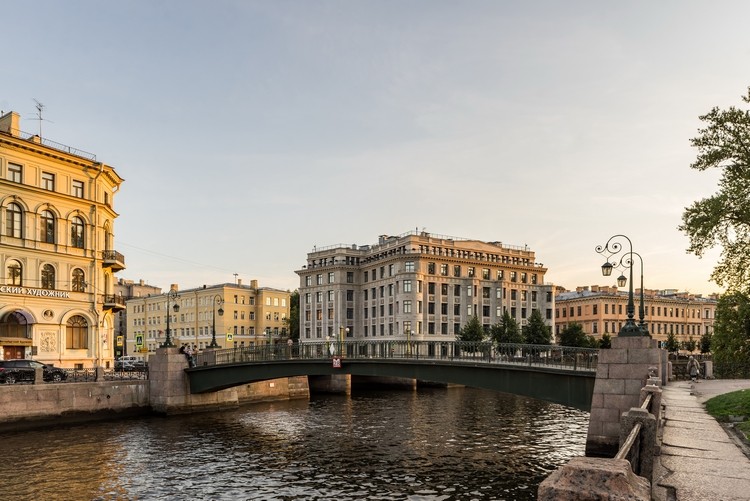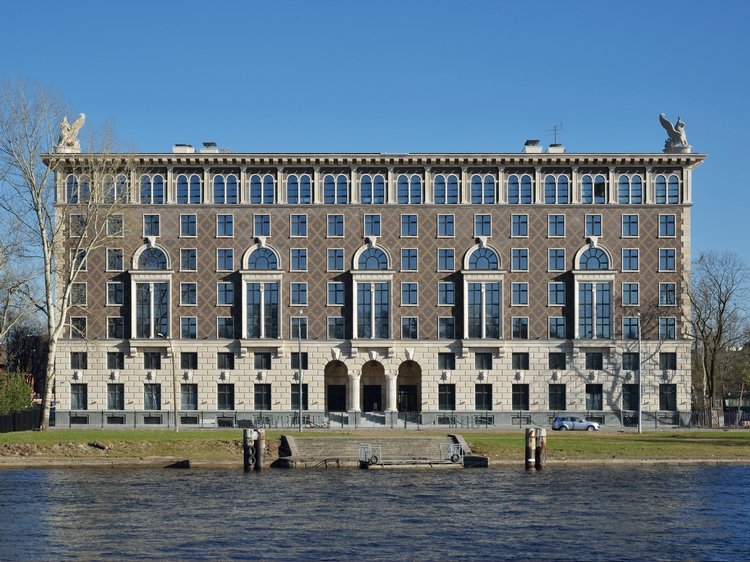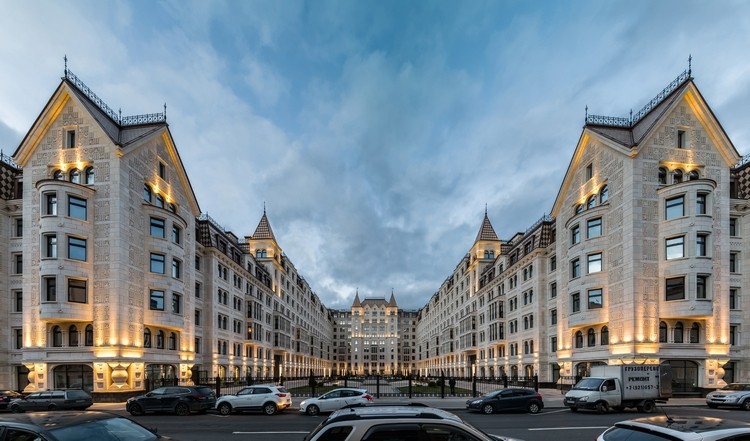Evgeny Gerasimov, “An architect must have perseverance and patience”
Evgeny Gerasimov
Evgeny Gerasimov is an SPbGASU graduate; he is the head of the Evgeny Gerasimov and Partners Architectural Bureau. His name is associated with landmark design projects that have changed the look of St. Petersburg. Evgeny Gerasimov took the time to answer our questions.
– Evgeny, how did it happen that you chose the profession of an architect?
– After graduating from high school, I was somewhat confused. Since along with graduation from general education high school I graduated from an art school with pretty good results, I wanted my future profession to be somehow related to painting. But I did not see myself as an artist. Architecture seemed to me a good compromise. And that made the profession of architect a good choice.
– Why did you prefer to study at SPbGASU?
– I was born in Biysk, where my parents got by placement of graduates. They met in this city and got married. Then the family moved to Leningrad. When I decided to engage in architecture, LISI seemed to be the right, reputed educational institution. My parents are far from architecture and they grew up not in Leningrad, so they could not give me any advice on that. I made the decision to enroll to LISI on my own.
– How do you remember your years of study?
– When I started studying, the Faculty of Architecture was located in Boytsova Lane; the place had a special aura. In 1979, our Faculty moved to the 2nd Krasnoarmeiskaya Street, where a new building of the University was finished. It was a big event. In general, there were all sort of events, but I specifically want to note the construction teams: those were real adventures. Every summer we would go somewhere: to Kazakhstan, the Polar Region, build playgrounds in Leningrad. Our construction team was the best; I even have the diploma signed by the first secretary of regional Komsomol committee Valentina Matvienko. She shook my hand as a representative of the best construction team in Leningrad.
On the whole, it was a classic studentship, with both study and sport (we desperately played football).
– And which of the teachers influenced you the most?
– At the early grades, it was Tatiana Slavina. Then there was Andrey A. Grushke, a right-hand man of the famous architect Levinson. I was greatly influenced by the communication with Leonid P. Lavrov, whom I am very grateful to and with whom I stay in touch until now. God bless him long life.
– How did your creative biography develop?
– After graduation from LISI, I was placed at LenNIIProject and I had worked there, in the 19th workshop, from 1983 to 1990, reaching the position of team leader. In the 1990th, together with Yuri Mityuryov (unfortunately, who had already passed off) I left LenNIIProject, and a year later, I started my own company Evgeny Gerasimov and Partners, which still keeps working. Next year we will celebrate its thirtieth anniversary. We have a tradition: every five years we hold an exhibition of our projects in the Ethnography Museum. On the company's 30th anniversary, we'll definitely make an exhibition of the sort.
– What qualities do you think a modern architect should have?
– It seems to me that an architect must have the same set of qualities at all times. As in any case, you must be proficient in your craft. As for the specifics of architecture, you have to have persistence and patience, because the implementation of design projects is a long process. It doesn't happen like this in our profession: you've got illuminated and in half an hour you've come up with something that no one has ever thought of before. More than one year goes by from conception to implementation. I have designs the first sketches on which I made back in 1991, and they were built in 2010: it took nearly 20 years to implement it. Architecture is a profession for the patient.
– What designs of your architectural bureau do you consider the most significant?
– Significant means large. If we talk about large projects, then this, of course, is our joint project with the Moscow architect Sergei Choban, the Nevskaya Town Hall project, the Congress and Exhibition Center in Shushary, the Evropa City RC. Of the small ones, I would single out the building on Ostrovsky Square, a residential building on Moika 102, and the Jewish Community House on Bolshaya Raznochinnaya Street. For the latter design, we’ve received all conceivable state prizes of the Russian Federation and prizes of the Russian architectural community.
Nevskaya Town Hal
Jewish Community House
Congress and Exhibition Center in Shushary (Expoforum)
– Does your company employ graduates from our university, and how can you assess their professional level?
– My company has five partners. They all graduated from the SPbGASU Faculty of Architecture. These are my classmate Victor Lhivrich, Zoya Petrova who studied a year later, and two other co-owners of the architectural bureau, who joined us much later, these are Tatiana Komaldinova and Karen Smirnov. They all graduated from our university. The level of teaching at the SPbGASU Faculty of Architecture is high.
– What trends, in your opinion, predominate in the modern architecture of St. Petersburg?
– Let's take it as an axiom that architecture is a reflection of life, and a remarkably accurate one. If an artist or a writer can be ahead or backward of time, an architect must be precisely in it. If they do not do so, they are doomed to fail to implement their own projects. Architecture extremely accurately reflects the time and the level of development of society, its economic and artistic condition, its aesthetic views. The state of modern Russian society is reflected in architecture as in a drop of water.
Today, the predominance of economy class housing is typical; the times when the consumer could easily find any housing project at any cost are behind us. People have less money, and developers have concentrated on building economical houses. Just a few public buildings are being built. Ninety-nine percent of everything built is low-class housing. Of course, there are higher-quality projects, but just a few. We work in the premium segment of the market, clients trust us. We build such houses as "House by the sea", a house on Victory street, 5, houses on Krestovsky and Kamenny islands, the Neva House Residential Complex on Petrovsky island. But there are fewer and fewer projects like this in St. Petersburg.
– What buildings and structures built in our city over the past fifteen years seem to you the most appealing?
– To avoid being indecent, I will omit the designs of our company. From what my colleagues have done, I like the house on Kazanskaya Street of the architects Reinberg and Sharov, the house of Zemtsov and Kondiain at #3 Fontanka Embankment. By the way, Zemtsov and Kondiain also are LISI graduates. An interesting business center is located at #80 Bolshoy Avenue of Vasilievsky Island, by architect Alexander Kitsula, who also graduated from our university. The Hockey City sports and concert complex on Bolshevikov Avenue, by another graduate of SPbGASU, Sergey Oreshkin, is quite impressive.
– What is the role of the architect in the process of erecting a building? Don’t you have the feeling that the status of an architect has dropped down?
– Yes, there is such a feeling. And this is not a global trend, but a purely Russian phenomenon. In the days of Stalinist architecture, the state cared about its spatial image; it was concerned about how the Soviet cities looked. Now I’ve a feeling that the Russian state does not care about this at all, everything has been left to the real estate developers, both state and non-state companies. Hence the cat's concert we see. In the pursuit of profit, little attention is paid to quality. Architects are deprived of the right to insist on the quality implementation of their design projects. The copyright in architecture (and not only in architecture) is in a poor condition. Therefore, the situation is like this: the state is not interested in architecture and it absolutely does not care about the architects.
– How do you think the relationship between the architects and the authorities in St. Petersburg is developing today?
– Unfortunately, the city authorities heed little to the opinion of the architectural community. A monument of Soviet architecture, the SCC, is being demolished in the city. The monument of Soviet architecture, Kirov Stadium, built in honor of the victory in the Great Patriotic War, has been demolished. Architect Nikolsky (SPbGASU graduate) was awarded the Stalin Prize of the first degree. A park with a theatre instead of the Supreme Court on Tuchkov Buyan was decided to be built, and the chief architect of St. Petersburg was the last to know about that. The Lakhta Center Tower was built, and with its appearance St. Petersburg citizens lost the main panorama of the city, i.e., the view of the Peter and Paul Fortress from the Palace Embankment. This project did not pass through the Urban Planning Council, no one consulted with the architects.
– Is there any possibility of the appearance of new city districts that would be architecturally interesting and livable??
– Yes, it is quite possible, but it requires the desire of both the city and architectural authorities. It is possible to reduce the number of floors, to make the environment more comfortable for people, to reduce the coefficient of development, to build roads. It is necessary to provide people with kindergartens, schools and shops. In order to avoid the situation as it is in Murino: the neighborhood is built but it is virtually impossible to get there. It is necessary to have a desire and understanding of how to achieve the desired. That is, will, education and vision are needed.
– Is modern architecture becoming a synthetic form of human activity, combining the latest scientific, industrial and some arts?
– The synthesis of art has always existed since ancient times. Architecture comprised both sculpture and scripts. But I cannot say that modern Russian architecture is a synthesis of arts and the latest scientific achievements. I repeat, today we are mainly engaged in economy class housing. The latter is not an achievement of architecture but of the building techniques, modular conveyor and marketing. It is necessary to make everything as quickly and as cheaply as possible. Today architecture ceases to be a method of the organization of space and turns into means of achievement of development results.
Yes, developers strive for some "human" environment. But they first erect square meters, and then pack them behind a painted facade. Architecture is replaced by facade design, so it is not at the peak of scientific achievements and is not a scientific or technological progress. In fact, the Khrushchev task of building the largest number of square meters by the cheapest method is still there. This is neither good nor bad. After all, if we remember that the number of square meters per capita in St. Petersburg is three times lower than in Finland, we will understand what we have to keep building and building. And then, one day, the quantity will turn into quality.
Text: Elena Shulgina
✔ Learn more about the Enrollment to SPbGASU








